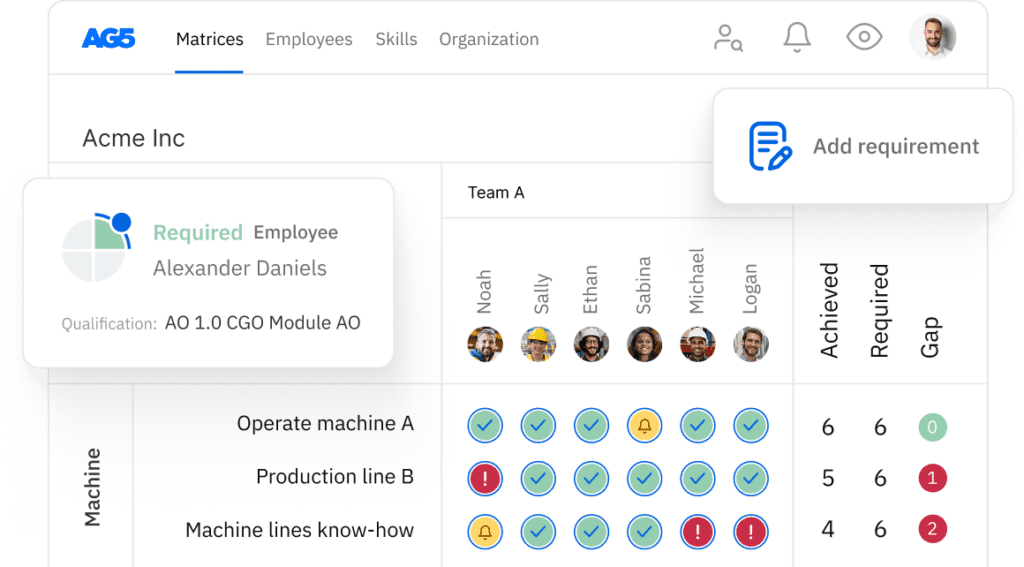CEM: Certified Energy Manager
A Certified Energy Manager (CEM) certification is a globally recognized certification for energy management. In this guide, we will explore the key aspects of CEM certification, including its significance, steps required for certification, benefits of implementation, and more.

What is a Certified Energy Manager? Copied
A Certified Energy Manager (CEM) is a certification offered by the Association of Energy Engineers (AEE). It recognizes an individual’s expertise to optimize energy performance in a facility, building, or industrial plant.
The certification encompasses all areas of energy performance, including:
- Electrical infrastructure
- Mechanical infrastructure
- Building infrastructure
- Energy processes
- Energy auditing
- Energy efficiency
- Energy conservation
- Sustainable practices
CEM-certified individuals are equipped to optimize energy usage, reduce costs, and implement effective energy management strategies across diverse industries and sectors.
Who needs a CEM certification? Copied
Energy engineers, facility managers, and sustainability specialists benefit from obtaining a Certified Energy Manager (CEM) certification. It is also valuable for organizations seeking expertise in optimizing energy use, conducting audits, and implementing sustainable practices. While not mandatory, it serves as a valuable credential demonstrating a high level of expertise in energy management.
How to become a Certified Energy Manager Copied
To become a CEM, candidates must have a mix of education and work experience. For example, those without a degree must have 10 or more years of related work experience, while those with a four-year engineering or architectural degree – or a Professional Engineer (PE) or Registered Architect (RA) certification – must have three or more years of related working experience.
You can find full eligibility criteria for CEM certification on the AEE’s website. Eligible candidates must also take part in a CEM preparatory training program, which run year around and internationally.
The cost of CEM certification Copied
Application and exam fees for CEM certification cost $500. There is a $250 exam retake fee. There is also the cost of the CEM training, which will vary depending on the program, but which typically cost between $2,000 and $5,000. Overall costs will vary for international candidates, who must attend a training program and take an exam administered by one of the AEE’s approved training partners.
Renewal requirements for a CEM certification Copied
A CEM certification must be renewed every three years at a cost of $300. To be eligible for renewal, candidates must earn 10 Continuing Education Units (CEU) or Professional Development Hours (PDH) during this time.
Candidates can earn hours or units through activities such as:
- Employment in an energy-related role or field
- Membership in a professional energy-related organization
- Attending energy-related conferences, seminars, or courses
- Publishing industry papers or research
- Earning energy industry awards
The benefits of CEM certification Copied
A CEM certification offers several benefits to employees and organizations. Some key advantages include the following.
Heightened operational efficiency
CEM-certified professionals bring advanced skills and insights to optimize organizational processes, leading to heightened operational efficiency. This efficiency results in streamlined workflows, cost savings, and improved overall performance, directly benefiting the organization’s bottom line.
Strategic decision-making:
CEM certification equips employees with strategic management knowledge, enabling them to make informed decisions aligned with organizational goals. Organizations with CEM-certified staff experience more agile and effective decision-making processes, fostering adaptability in dynamic business environments.
Enhanced employee productivity
CEM-certified professionals contribute to a culture of continuous improvement, motivating teams to work collaboratively towards common objectives. This certification fosters a shared understanding of best practices, leading to enhanced employee productivity and a cohesive work environment that is conducive to innovation and success.
Challenges in earning a CEM certification Copied
Earning a CEM certification may pose several challenges to organizations. They include the following.
Resource allocation and time constraints
Organizations pursuing CEM certification may face challenges in allocating resources, both in terms of time and finances. Balancing certification efforts with daily operations requires careful planning to avoid disruptions, and organizations must navigate potential conflicts between certification goals and immediate operational needs.
Resistance to change and implementation hurdles
Implementing CEM principles often necessitates organizational change, which can encounter resistance from staff accustomed to existing processes. Overcoming these challenges requires effective change management strategies and communication to ensure a smooth transition, preventing disruptions to productivity and morale.
Measuring and demonstrating ROI
Quantifying the return on investment (ROI) of CEM certification can be challenging, as the impact on organizational performance may not be immediately apparent. Organizations must develop robust metrics and measurement systems to track the tangible benefits of certification, demonstrating its value to stakeholders and justifying the associated investments.
Tips and strategies for preparing for CEM certification Copied
Here are a few tips for preparing for CEM certification.
- Understand the CEM exam structure, topics, and question formats. Familiarity with the examination environment and timing ensures a more confident and efficient test-taking experience.
- Develop a well-organized study plan covering all CEM certification domains.
- Allocate time for regular reviews, practice tests, and hands-on application of concepts to reinforce learning Practical experience reinforces theoretical concepts, aiding in the retention of information and better preparation for the certification exam.
- Use official CEM study materials, practice exams, and resources provided by AEE.
- Network and collaborate with fellow CEM candidates and professionals.
Resources for CEM certification Copied
For more information and guidance on CEM certification, you can refer to the following resources.
Association of Energy Engineers. As the certifying body, the AEE’s website should act as the primary resource for those seeking information about CEM certification. The AEE’s in-depth FAQ for CEM certification is a great place to start here.
Approved training partners. CEM certification requires candidates to take part in a training program. The AEE has outlined a list of approved training partners for CEM certification for international candidates on its website.
Resources and study guides. The AEE also offers a wide range of resources and study guides to those seeking CEM certification.
Skills management for Certified Energy Managers Copied
Skills management for Certified Energy Managers
AG5 stores all certifications in the cloud, providing all authorized personnel with access to the right version of approved certifications. This helps you easily keep track of all data and documentation related to CEM certifications across your organization.
Using AG5’s skills management software, you can monitor the status of any type of certification that is relevant to your workforce, leveraging intuitive dashboards that provide you with a clear understanding of exactly what is needed to keep your employees skilled and safe.
Frequently asked questions about CEM certification Copied
-
What is the scope of a Certified Energy Manager certification?
-
Is CEM certification mandatory?
-
How long does it take to obtain a CEM certification?
-
What are the cost considerations for CEM certification?
-
What is the validity period of a CEM certification?
-
Can a CEM certification be integrated with other management systems?
-
How can you learn more about CEM certification?
Resources Copied
(All information gathered from above sources. Sources checked 7.12.2023)
Author Copied
Revisions Copied
Tired of managing skills in Excel?
Say goodbye to Excel matrices. Start using AG5’s plug and play skill matrix software.
Recognized by G2 for Excellence in Skills Management

